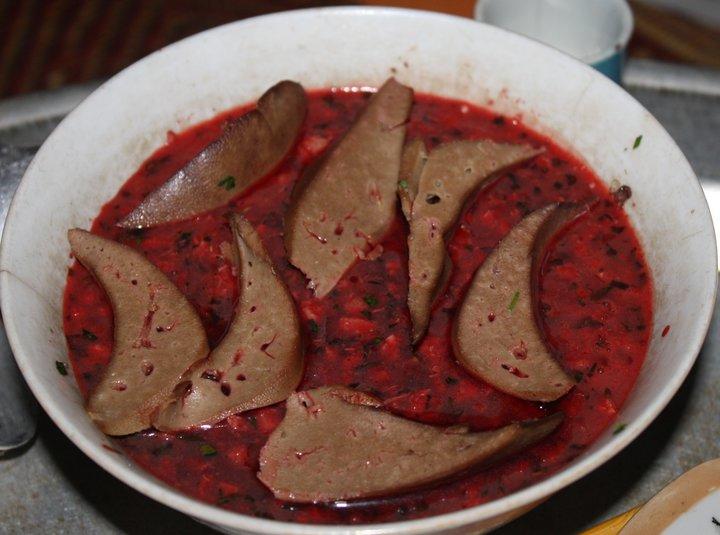From the Field Assessing the nutrition potential of diverse local foods in Vietnam

Jessica Raneri, Nutrition and Marketing Diversity Programme Specialist, Bioversity International, reports from Vietnam where she is carrying out research with partners to improve diet quality and diversity using local foods.
Jessica Raneri, Nutrition and Marketing Diversity Programme Specialist, Bioversity International, sends her first report from Vietnam where she is carrying out research with partners to improve diet quality and diversity using local foods.
I am currently working on a nutrition initiative through the CGIAR Research Program on Humidtropics to assess the potential of diverse local foods in Vietnam. We are looking at the potential of using diverse local foods to improve diet quality and diversity, especially for women of reproductive age and for children between 12-23 months.
Malnutrition rates are high in Vietnam with a lack of dietary diversity thought to be a crucial factor. In the developing world diets often consist of starchy staples, with not enough nutrient-rich foods, such as the nutrients that come from animal source foods, legumes, fruit and vegetables. The prevalence of undernutrition for children under five for stunting, underweight and wasting in Vietnam in 2012 was 27%, 16% and 7% respectively with the proportion of infants and young children (6-23 months) who did not achieve minimum dietary diversity at 13%.
When looking at diet quality and diversity, it is important to consider food systems as a whole. This means considering all the complex dimensions of a food system not just what is in a diet: production to processing; the marketability of local foods; natural resource management; and resilience to external stresses such as climate change. Taking this perspective means you are better able to understand how interventions can contribute to food systems in a sustainable and healthy way.
 In Vietnam, we are piloting a community-based approach that engages with the community members as research partners. This ensures not only that cultural preferences (such as taste, ease of processing, suitability to preferred cooking methods, etc.) are taken into account, but that diets are the result of collaborative knowledge-sharing between researchers and the community members. The added benefit of participatory research is that results belong to the community which helps to ensure the uptake of knowledge once the research is finished.
In Vietnam, we are piloting a community-based approach that engages with the community members as research partners. This ensures not only that cultural preferences (such as taste, ease of processing, suitability to preferred cooking methods, etc.) are taken into account, but that diets are the result of collaborative knowledge-sharing between researchers and the community members. The added benefit of participatory research is that results belong to the community which helps to ensure the uptake of knowledge once the research is finished.
We are starting with a baseline study of agricultural biodiversity that is available and accessible both on and off the farm – not just what is grown on the farm and in home gardens but also wild foods and foods sold at the market. We are also interviewing women to find out their nutrition and diet knowledge and practices, and carrying out a 24-hour recall to estimate the average nutrient intakes of women and children aged between 12-23 months in the study area households. We are conducting the 24-hour recall twice, at different times of the year, to ensure that the information reflects changes in diets across seasons, which affects availability of foods and what is eaten.
Bioversity International has recently facilitated a 3-day practitioner workshop with partners in Hanoi, Vietnam, to refine the 24-hour recall methodology that will be piloted this year under the CGIAR Research Program on Humidtropics, and adapt it to suit our own research needs. I will be sending my second report on this workshop next week.
Read Jessica’s other blogs about this research:
Part 2 : Bringing together best methods to assess food quality and dietary intake in Vietnam
Part 3 : Improving dietary quality and diversity through systems innovation
Part 4 : Putting nutrition data to work in the community
Part 6: Spicing it up to increase vitamin A consumption in Vietnam
Take a look at Jessica's photos from Vietnam
For more information, contact:
Jessica Raneri
Partners
This work is carried out in collaboration with the CGIAR Research Program on Humidtropics and Agriculture for Nutrition and Health. Local partners include the Health Bridge Foundation Canada Vietnam and CARES (Center for Agriculture Research and Ecological Studies) from the Hanoi Agriculture University.
Photos
Photo 1 - H’Mong (Minority Ethnic Group) traditional dish, taken in Keo Po Village, Yen Chau District, Son La Province, Vietnam. Credit: Bioversity International/J. Raneri
Photo 2 - Jessica Raneri sharing traditional food dishes with community members in Keo Po Village, Yen Chau District, Son La Province. Credit: Bioversity International/J. Raneri
This story is part of the 2014 Annual Report
